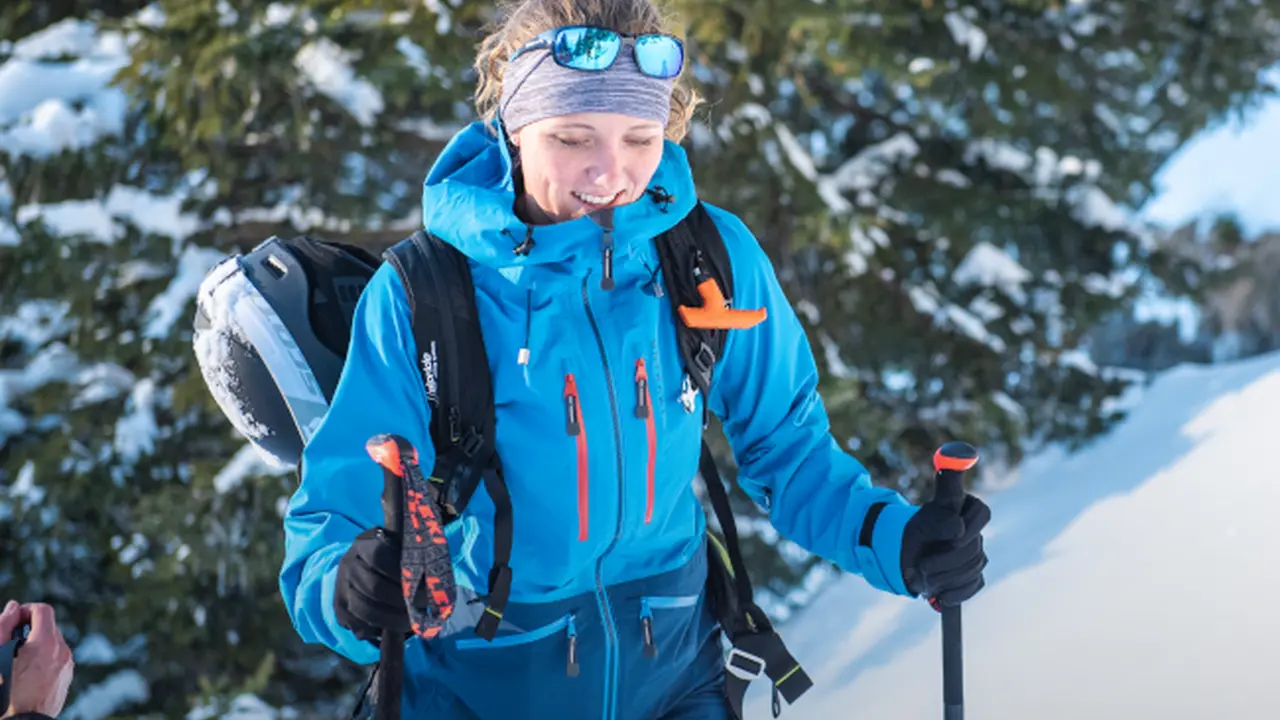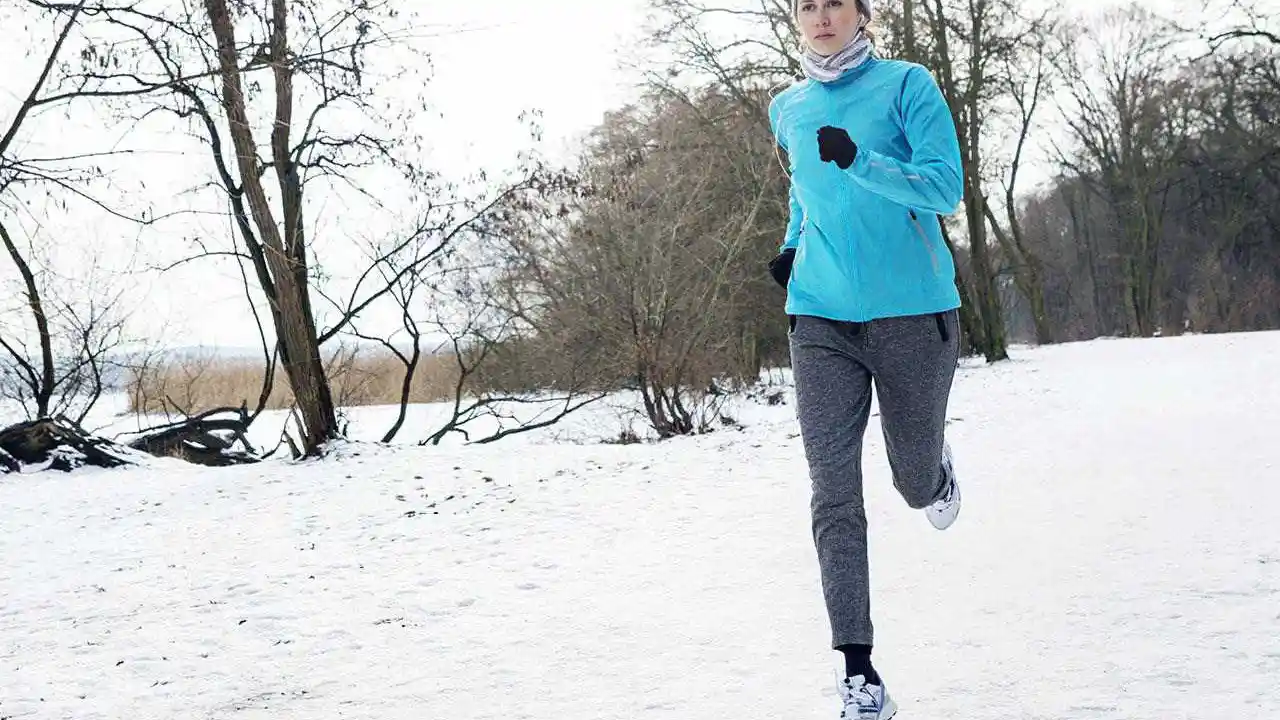
Essential Ski Apparel for Cold Weather Your Ultimate Guide to Staying Warm and Dry on the Slopes
Hey there, fellow snow enthusiasts! Ready to hit the slopes but worried about battling the biting cold? You're in the right place. Dressing appropriately for skiing isn't just about looking good; it's crucial for your comfort, performance, and most importantly, your safety. Freezing temperatures, strong winds, and unexpected snow showers can turn a fun day into a miserable one if you're not properly geared up. This comprehensive guide will walk you through everything you need to know about essential ski apparel for cold weather, from the innermost layers to the outermost shell, ensuring you stay toasty and dry from first chair to last run.
Understanding the Layering System The Foundation of Warmth and Comfort
The secret to staying warm and dry while skiing lies in the art of layering. It's not about piling on bulky sweaters; it's about strategically combining different types of clothing that work together to trap heat, wick away moisture, and protect you from the elements. The layering system typically consists of three main components: the base layer, the mid-layer, and the outer shell. Each layer serves a specific purpose, and understanding their functions is key to optimizing your warmth and comfort on the mountain.
Base Layers Your Skin's Best Friend for Moisture Management
The base layer is your first line of defense against the cold and, more importantly, against sweat. When you're skiing, you're exercising, and your body produces sweat. If this sweat stays on your skin, it will cool you down rapidly, leading to discomfort and even hypothermia. A good base layer is designed to wick moisture away from your skin, keeping you dry and warm. Think of it as a second skin.
Materials for Base Layers What to Look For
- Merino Wool: This is often considered the gold standard for base layers. Merino wool is incredibly soft, naturally odor-resistant, and excellent at wicking moisture while still providing warmth even when damp. It's also breathable, making it comfortable across a range of temperatures.
- Synthetic Fabrics (Polyester, Polypropylene): These materials are highly effective at wicking moisture and drying quickly. They are generally more durable and less expensive than merino wool. However, they can sometimes retain odors more easily. Look for blends that offer a good balance of performance and comfort.
- Avoid Cotton: Seriously, just say no to cotton for your base layers. Cotton absorbs moisture and holds onto it, making you feel cold and clammy. It's the enemy of warmth in cold, active environments.
Recommended Base Layer Products for Skiing and Snowboarding
Smartwool Merino 250 Base Layer Crew and Bottoms:
- Description: Made from 100% ZQ-certified Merino wool, this mid-weight base layer offers excellent warmth, breathability, and moisture management. It's incredibly soft against the skin and naturally resists odors.
- Use Case: Ideal for cold to very cold conditions, providing substantial warmth without bulk. Perfect for long days on the mountain.
- Pros: Superior warmth, excellent moisture wicking, odor resistance, comfortable.
- Cons: Higher price point, can be less durable than synthetics over time.
- Approximate Price: $110 - $120 per piece (top or bottom).
Patagonia Capilene Midweight Base Layer:
- Description: A synthetic option made from 100% recycled polyester with HeiQ® Fresh durable odor control. It's designed for excellent moisture wicking and quick drying.
- Use Case: Versatile for a wide range of temperatures, from mild to cold. Great for high-output activities where quick drying is essential.
- Pros: Excellent moisture wicking, quick drying, durable, more affordable than merino, made from recycled materials.
- Cons: Can feel less soft than merino for some, may retain odors slightly more than wool over extended use.
- Approximate Price: $70 - $80 per piece (top or bottom).
Mid-Layers The Insulating Powerhouse for Skiers and Riders
The mid-layer is your primary insulating layer. Its job is to trap warm air close to your body, providing the bulk of your warmth. Depending on the temperature and your activity level, you might wear one or more mid-layers.
Materials for Mid-Layers What Provides the Best Insulation
- Fleece: A popular choice due to its warmth-to-weight ratio, breathability, and quick-drying properties. Fleece comes in various weights (100, 200, 300), with higher numbers indicating more warmth.
- Down: Extremely lightweight and compressible, down offers incredible warmth for its weight. However, its insulating properties are severely compromised when wet, so it's best used in dry conditions or under a waterproof outer shell.
- Synthetic Insulation: Materials like PrimaLoft or Thinsulate mimic the properties of down but perform better when wet. They are also often more affordable and hypoallergenic.
- Wool (Thicker): Thicker wool sweaters or jackets can also serve as effective mid-layers, offering natural warmth and breathability.
Recommended Mid-Layer Products for Skiing and Snowboarding
Arc'teryx Atom LT Hoody:
- Description: A highly versatile and popular synthetic insulated hoody. It uses Coreloft™ Compact insulation, which is warm, breathable, and retains warmth even when damp. The side panels are made of fleece for enhanced breathability and mobility.
- Use Case: Excellent as a mid-layer on colder days or as a standalone outer layer in milder, dry conditions. Its breathability makes it great for active skiing.
- Pros: Exceptional warmth-to-weight, highly breathable, performs well when damp, versatile.
- Cons: Higher price point, not fully waterproof (needs a shell over it in wet conditions).
- Approximate Price: $260 - $300.
The North Face Denali 2 Fleece Jacket:
- Description: A classic fleece jacket made from recycled fleece. It's warm, durable, and features reinforced shoulders, chest, and forearms for abrasion resistance.
- Use Case: A reliable and warm mid-layer for most cold weather skiing. Can also be worn casually off the slopes.
- Pros: Very warm, durable, comfortable, relatively affordable.
- Cons: Can be bulky under a shell, not as compressible as synthetic insulation or down.
- Approximate Price: $180 - $200.
Outer Shells Your Shield Against the Elements for Skiing and Riding
The outer shell is your protective barrier against wind, snow, and rain. Its primary functions are to be waterproof, windproof, and breathable. A good shell will keep external moisture out while allowing internal moisture (sweat vapor) to escape, preventing you from getting clammy.
Types of Outer Shells Understanding the Differences
- Hardshell Jackets/Pants: These are typically non-insulated and rely on the layers underneath for warmth. They are highly waterproof and windproof, offering maximum protection in harsh conditions. They are often made with Gore-Tex or similar proprietary waterproof/breathable membranes.
- Insulated Jackets/Pants: These shells have a layer of synthetic or down insulation built into them. They offer warmth and weather protection in one garment, which can be convenient but less versatile for varying temperatures.
- Softshell Jackets/Pants: More breathable and flexible than hardshells, softshells offer good wind resistance and some water resistance (often DWR treated). They are best for milder, drier conditions or high-output activities where breathability is prioritized over absolute waterproofing. Less common as primary ski shells.
Key Features to Look for in Ski Outerwear
- Waterproof/Breathable Membrane: Look for ratings like 10,000mm or higher for waterproofing and 10,000g/m²/24hr or higher for breathability. Gore-Tex is a well-known and highly effective membrane.
- Seam Taping: Fully taped seams prevent water from seeping through the stitching.
- Vents (Pit Zips, Thigh Vents): Crucial for regulating temperature during high-exertion activities.
- Powder Skirt: An internal elasticized band that snaps around your waist to prevent snow from getting up your jacket.
- Adjustable Hood: A helmet-compatible hood is a big plus.
- Pockets: Plenty of easily accessible pockets for lift passes, phone, snacks, etc.
Recommended Outer Shell Products for Skiing and Snowboarding
Arc'teryx Rush Jacket (Hardshell):
- Description: A top-tier hardshell jacket made with Gore-Tex Pro, offering exceptional durability, waterproofing, and breathability. Designed for big mountain skiing and snowboarding.
- Use Case: For serious skiers and riders who demand the best protection in the harshest conditions. Requires layering underneath for warmth.
- Pros: Unmatched weather protection, highly durable, excellent breathability, well-designed features.
- Cons: Very expensive, no insulation (requires separate mid-layers).
- Approximate Price: $600 - $700.
Columbia Bugaboo II Interchange Jacket (Insulated/3-in-1):
- Description: A versatile 3-in-1 jacket featuring a waterproof outer shell and a removable fleece liner. The shell uses Columbia's Omni-Tech waterproof/breathable technology.
- Use Case: Great for beginners or those looking for a versatile jacket that can adapt to different temperatures. The fleece liner provides warmth, and the shell offers protection.
- Pros: Versatile (can be worn as shell, fleece, or combined), good value, decent weather protection.
- Cons: Not as breathable or high-performance as dedicated hardshells, fleece liner can be bulky.
- Approximate Price: $150 - $200.
Burton AK Gore-Tex Cyclic Jacket (Hardshell):
- Description: A popular choice for snowboarders, this jacket uses Gore-Tex 2L fabric for reliable waterproofing and breathability. It's a shell, so you layer underneath.
- Use Case: Ideal for riders who want durable, reliable weather protection and prefer to control their warmth with layers.
- Pros: Excellent waterproofing, durable, good breathability, snowboard-specific fit and features.
- Cons: Higher price, no insulation.
- Approximate Price: $400 - $450.
Beyond the Core Essential Accessories for Head Hands and Feet
While your main layers are crucial, don't underestimate the importance of accessories. Your extremities are most susceptible to cold, and protecting them is vital for overall comfort and preventing frostbite.
Ski Socks The Unsung Heroes of Foot Comfort
Good ski socks are thin, warm, and moisture-wicking. Avoid thick cotton socks, as they will bunch up, cause blisters, and make your feet cold. Look for merino wool or synthetic blends.
Recommended Ski Sock Products
Smartwool PhD Ski Light Elite Socks:
- Description: Made with a blend of merino wool, nylon, and elastane, these socks offer targeted cushioning, excellent moisture management, and a comfortable fit.
- Use Case: All-around excellent ski socks for warmth, comfort, and blister prevention.
- Pros: Great fit, durable, excellent moisture wicking, comfortable cushioning.
- Cons: Can be pricey for socks.
- Approximate Price: $20 - $25 per pair.
Darn Tough Over-the-Calf Padded Cushion Socks:
- Description: Known for their incredible durability and comfort, these merino wool blend socks offer targeted cushioning and a performance fit. They come with a lifetime guarantee.
- Use Case: For skiers who want a highly durable and comfortable sock that will last for years.
- Pros: Extremely durable, comfortable, excellent moisture wicking, lifetime guarantee.
- Cons: Slightly higher price.
- Approximate Price: $25 - $30 per pair.
Gloves or Mittens Protecting Your Digits on the Slopes
Warm hands are happy hands. The choice between gloves and mittens often comes down to personal preference and temperature. Mittens are generally warmer because they allow your fingers to share warmth, while gloves offer better dexterity.
Key Features for Ski Gloves/Mittens
- Waterproof/Breathable Insert: Look for Gore-Tex or similar membranes.
- Insulation: Synthetic insulation or down.
- Durability: Reinforced palms and fingers for grip and longevity.
- Cuffs: Gauntlet cuffs (over the jacket sleeve) or under-cuff styles.
Recommended Glove/Mitten Products
Hestra Army Leather Heli Ski Mittens:
- Description: A legendary mitten known for its exceptional warmth, durability, and removable liner. Made with proofed goat leather and polyamide fabric.
- Use Case: For very cold conditions and those who prioritize warmth above all else. Popular among ski patrollers and professionals.
- Pros: Extremely warm, highly durable, removable liner for drying/washing, excellent grip.
- Cons: Expensive, less dexterity than gloves.
- Approximate Price: $160 - $180.
Black Diamond Guide Gloves:
- Description: A highly insulated and durable glove designed for cold, demanding conditions. Features a Gore-Tex insert and a removable wool liner.
- Use Case: For cold weather skiing where dexterity is still important.
- Pros: Very warm, durable, good dexterity for a warm glove, removable liner.
- Cons: Can be bulky, expensive.
- Approximate Price: $170 - $190.
Headwear Helmets and Beanies for Safety and Warmth
A significant amount of body heat can be lost through your head. A helmet is non-negotiable for safety, and it also provides a good amount of warmth. On colder days, a thin beanie or balaclava worn under your helmet can add extra insulation.
Recommended Headwear Products
Giro Ledge MIPS Helmet:
- Description: A durable and comfortable helmet featuring MIPS (Multi-directional Impact Protection System) for enhanced safety. It has good ventilation and is compatible with most goggles.
- Use Case: A solid, protective helmet for all levels of skiers and snowboarders.
- Pros: MIPS safety feature, durable, comfortable, good value.
- Cons: Ventilation might not be as adjustable as higher-end models.
- Approximate Price: $100 - $120.
Buff Merino Wool Lightweight Balaclava:
- Description: A thin, breathable balaclava made from 100% merino wool. It fits comfortably under a helmet and provides excellent warmth and moisture wicking.
- Use Case: For adding extra warmth and protection to your face and neck on cold or windy days.
- Pros: Lightweight, warm, breathable, odor-resistant, versatile.
- Cons: Can be a bit snug for some head sizes.
- Approximate Price: $30 - $40.
Neck Gaiters and Face Masks Protecting Exposed Skin
Your neck and face are often exposed to the elements. A neck gaiter or face mask can make a huge difference in comfort, especially on windy or very cold days.
Recommended Neck Gaiter/Face Mask Products
Seirus Innovation Balaclava:
- Description: Offers full head and neck coverage with a hinged design for versatility. Made from a warm, wicking fabric.
- Use Case: For maximum protection against cold and wind, especially on stormy days.
- Pros: Full coverage, warm, versatile design.
- Cons: Can feel a bit restrictive for some.
- Approximate Price: $25 - $35.
Smartwool Merino 250 Neck Gaiter:
- Description: A simple yet effective neck gaiter made from the same warm merino wool as their base layers.
- Use Case: Provides excellent warmth and protection for the neck and lower face.
- Pros: Warm, soft, odor-resistant, breathable.
- Cons: Less coverage than a full balaclava.
- Approximate Price: $30 - $35.
Putting It All Together Your Ski Apparel Checklist
Here's a quick checklist to make sure you've got all your essential ski apparel covered before you head out:
- Base Layer Top: Merino wool or synthetic
- Base Layer Bottom: Merino wool or synthetic
- Mid-Layer: Fleece, synthetic insulated jacket, or down jacket (depending on temperature)
- Outer Shell Jacket: Waterproof and windproof (hardshell or insulated)
- Outer Shell Pants: Waterproof and windproof (hardshell or insulated)
- Ski Socks: Thin, merino wool or synthetic blend
- Gloves or Mittens: Waterproof and insulated
- Helmet: Non-negotiable for safety
- Goggles: For eye protection and visibility
- Neck Gaiter/Balaclava: For face and neck protection on cold days
Tips for Maximizing Your Comfort on the Mountain
Beyond just having the right gear, how you use it can make a big difference.
Adjusting Layers on the Fly
The beauty of the layering system is its adaptability. As your activity level changes or the weather shifts, you can easily add or remove layers to maintain optimal comfort. Feeling too warm on a sunny traverse? Open your pit zips or take off your mid-layer. Getting chilly on the lift? Zip up completely and pull up your hood.
Keeping Your Gear Dry
Moisture is the enemy of warmth. At the end of each day, make sure to hang up all your layers to dry thoroughly. If your gloves or boots get wet inside, use boot dryers or stuff them with newspaper to absorb moisture. Never store damp gear, as it can lead to mildew and reduced performance.
Caring for Your Technical Apparel
Proper care extends the life and performance of your ski apparel. Follow the washing instructions on the labels. For waterproof shells, consider using technical washes and DWR (Durable Water Repellent) treatments to maintain their water repellency. Avoid using fabric softeners, as they can clog the pores of breathable membranes.
Don't Forget Sun Protection Even on Cloudy Days
Even in cold weather, the sun's UV rays are intensified by reflection off the snow. Always apply sunscreen to exposed skin, and wear good quality ski goggles with UV protection. Sunglasses are great for sunny breaks or après-ski.
Final Thoughts on Essential Ski Apparel for Cold Weather
Investing in quality ski apparel is an investment in your enjoyment and safety on the slopes. By understanding the layering system and choosing the right materials and products, you'll be well-equipped to tackle any winter conditions the mountain throws at you. So go ahead, gear up, and get ready to experience the thrill of winter sports in ultimate comfort. See you out there!
:max_bytes(150000):strip_icc()/277019-baked-pork-chops-with-cream-of-mushroom-soup-DDMFS-beauty-4x3-BG-7505-5762b731cf30447d9cbbbbbf387beafa.jpg)






